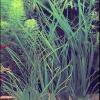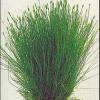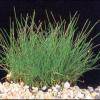Cyperus alternifolius
Scientific name: Cyperus alternifolius
Family: Cyperaceae
Maximum size reached under cultivation: 50 - 100 cm (19.69 - 39.37 inch)
014
Recommended pH range: 5.2 - 8.8
Recommended water hardness: 4 - 18°dGH (71.43 - 321.43ppm)
0°C 32°F30°C 86°F
Recommended temperature range: 17 - 28 °C (62.6 - 82.4°F)
Preferred propagation method: Divisions
Native to: Madagascar
Growth rate: Normal
Recommended substrate: Gravel
Lighting requirements: Bright
Ideal placement in tank: Background
Common Names
Umbrella Plant, Umbrella Sedge, Umbrella Papyrus
Origin
Cyperus alternifolius originates from Madagascar, but has become widely naturalized in tropical and subtropical regions including Africa, Asia, and the Americas. It is commonly grown as a decorative plant near water features or in moist garden settings.
Lighting Requirements
It grows best with 12 to 14 hours of light per day using either natural sunlight or full-spectrum LED lighting. When grown in high humidity and well-lit environments, it produces strong, upright stems and healthy umbrella-like leaf whorls.
Planting Area
Although often listed for aquariums, Cyperus alternifolius is not a true aquatic plant. It should only be used in emersed conditions—such as in paludariums, ripariums, or open-topped aquariums—where the roots stay wet but foliage remains above the waterline. Full submersion will cause the plant to deteriorate over time.
Propagation
The most reliable method of propagation is by dividing the plant. Carefully separate rooted clumps from the main plant, ensuring each division has a healthy set of roots and shoots. Alternatively, plantlets may develop at the base of mature stems or from leaf nodes that contact water. These can be rooted and transplanted once they begin to grow independently.
Difficulty
Medium. While the plant is tolerant of varying water chemistry, it requires consistently moist conditions and bright light. It is best suited for experienced hobbyists maintaining specialized setups such as paludariums or ponds.
Short Description
Cyperus alternifolius, also known as the Umbrella Plant, is an elegant emersed species with long stems topped by whorls of narrow leaves, resembling an umbrella. It brings a vertical accent to wet habitats and is particularly attractive in paludariums, water gardens, or emersed margins of aquariums. Not recommended for full submersion, but excellent when roots are kept wet and foliage remains above water.
This species is especially valued for its ability to thrive in high-humidity indoor environments, making it a popular choice for closed paludariums, ripariums, or open containers with misting systems, where it brings a lush, vertical accent to the space.

 Cyperus helferi
Cyperus helferi Eleocharis acicularis
Eleocharis acicularis Eleocharis vivipara
Eleocharis vivipara